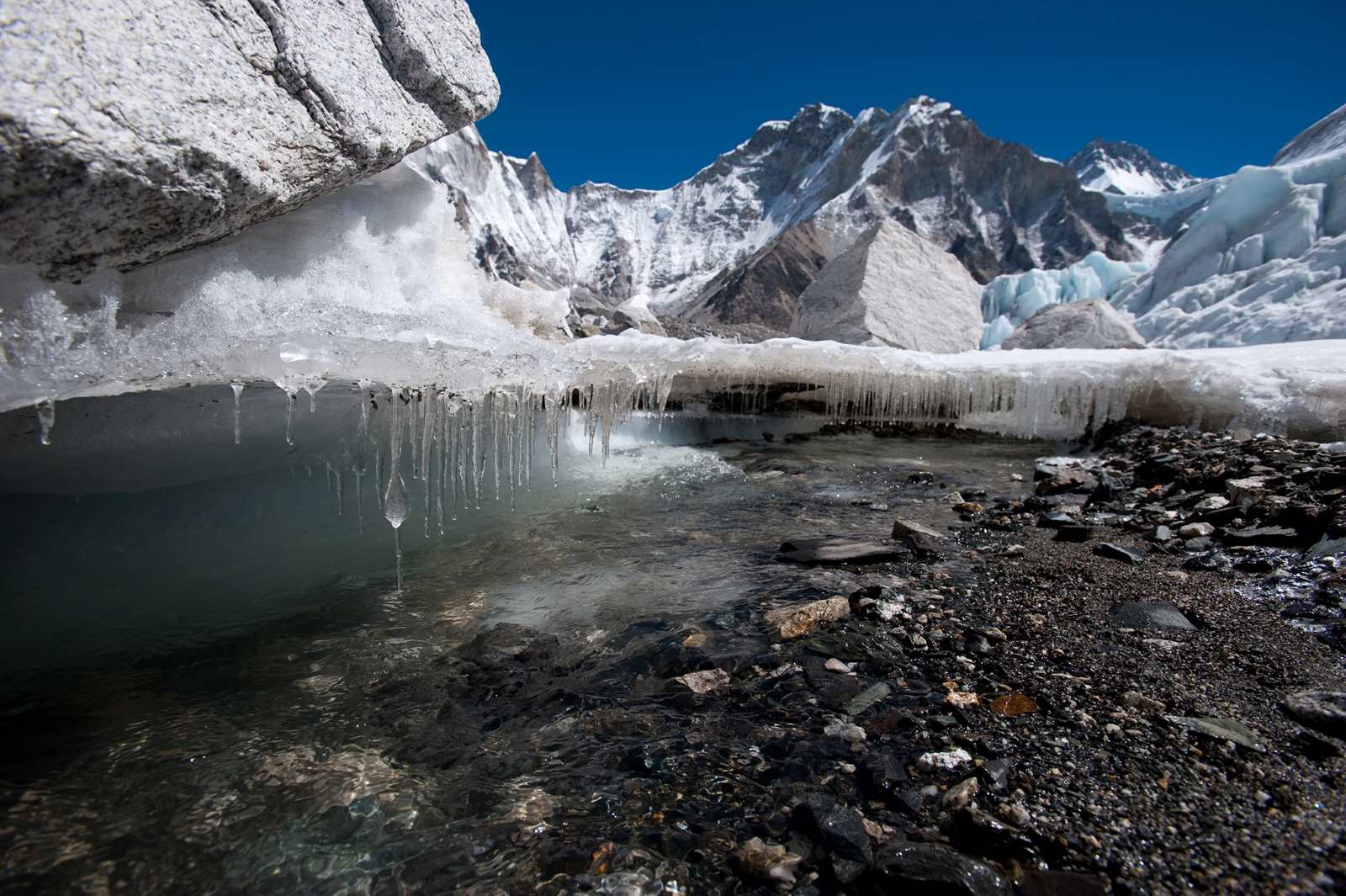Glacier Thinning in Hindu Kush Himalaya
Current Affairs International IssuesPosted by newadmin on 2025-03-24 08:45:29 |
Share: Facebook | Twitter | Whatsapp | Linkedin Visits: 17

The world is experiencing a rapid acceleration in glacier thinning, particularly in the Hindu Kush Himalaya (HKH) region. A recent United Nations report highlights that glaciers in this area are retreating 65% faster between 2011 and 2020 compared to the previous decade. Released on World Day for Glaciers, the report emphasizes the urgent need to combat climate change and mitigate its devastating impact on these crucial ice reserves.
Known as the “Third Pole,” the HKH region plays a vital role in sustaining water supplies. Spanning five million square kilometers, it contains approximately 100,000 square kilometers of glaciers, feeding ten major river systems that support nearly two billion people. A continued rise in global temperatures poses a severe threat to glacier volume, with projections indicating a significant decline by 2100, endangering water security for millions.
If global temperatures increase by 1.5 to 2°C, the glacier volume in the HKH region could shrink by 30-50% by the end of the century. Exceeding a 2°C rise would further intensify losses, potentially reducing glacier volume by up to 45% compared to 2020 levels. On a global scale, mountain glaciers are expected to lose between 26% and 41% of their mass by 2100, worsening water shortages in vulnerable regions.
The rapid melting of glaciers brings several hazards, including the risk of Glacial Lake Outburst Floods (GLOFs), flash floods, and landslides. Since the 1990s, the number of glacial lakes has increased significantly, leading to a rise in GLOF events. Over the past 200 years, these disasters have claimed more than 12,000 lives, with the HKH region bearing a substantial portion of these fatalities.
Mountain communities heavily depend on glacier-fed water sources for agriculture, drinking water, and hydropower. Climate change disrupts these critical resources, affecting food security and energy production. Additionally, industrial activities such as lithium mining contribute to water stress, with the extraction of one tonne of lithium requiring approximately 2,000 cubic meters of water, further depleting local supplies.
Governance and transboundary cooperation remain major challenges in managing water resources in mountainous regions. Weak institutional frameworks and a lack of effective collaboration among neighboring countries hinder disaster risk reduction efforts. Mistrust among riparian nations restricts data sharing, which is essential for predicting and mitigating water-related disasters.
To address these challenges, the report outlines key actions, including fostering sustainable cooperation among countries, recognizing the specific needs of local populations, and implementing strong climate policies to curb global warming. Strengthening ecosystem resilience and promoting data-sharing initiatives are critical steps in safeguarding the future of glacier-dependent communities and preventing further environmental degradation.
Search
Categories
Recent News
- RBI's UDGAM Portal: Hyderabad's Cyber Fraud Warning
- Hyderabad Gears Up for Presidential Visit: Traffic Advisory Issued
- Hyderabad Crypto Scam: Unraveling a Multi-State Fraud
- Cyber Scams Target Unsuspecting Citizens via RBI Portal
- Telangana's Tech-Driven Policing: Drones Take to the Skies
- RBI Governor Prioritises Digital Security: A Strategic Shift
- Hyderabad's Massive Anti-Drug Operation: 72 Foreigners Deported
- Hyderabad Tackles Traffic with Innovative Parking Solutions
Popular News
- Navigating IPO Market Dynamics Amid Volatility and Regulatory Changes
- Innovative Green Practices and Environmental Initiative
- Massive Worldwide Microsoft Outage Disrupts Multiple Sectors
- తెలుగుదేశం పార్టీ - పేదరికాన్ని నిర్మూలించడంలో వాగ్దానం
- Universities Embrace Remote Learning Technologies Amidst Ongoing Pandemic